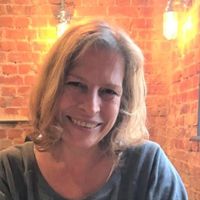Thousands of Scottish homes to be powered using waste heat from Edinburgh supercomputer
Researchers at the University of Edinburgh believe waste heat can be stored in abandoned mine workings and used to power homes


The University of Edinburgh is trialling a new system to store and use waste heat from its Advanced Computing Facility (ACF).
The plan for the £2.6 million feasibility study, known as the Edinburgh Geobattery project, is to store the heat in disused mine workings and then use it to heat at least 5,000 households in the Scottish capital.
If successful, the study could provide a global blueprint for converting abandoned flooded coal, shale, and mineral mine networks into underground heat storage sites, researchers said.
"The University’s own climate and sustainability targets mean that we need to look at a wide range of ways to address the challenges of the climate crisis," said Professor Sir Peter Mathieson, principal and vice-chancellor of the University of Edinburgh.
"This project brings together these commitments alongside our own innovative research to find solutions to tackle climate change that deliver direct benefits to people and influence positive change locally and globally."
The facility, home to the ARCHER2 national supercomputer and used for research such as national climate modelling and health data modelling, currently releases up to 70 GWh of excess heat per year.
This figure is projected to rise to 272 GWh once the UK government’s recently announced next-generation Exascale supercomputer is installed at the university.
Sign up today and you will receive a free copy of our Future Focus 2025 report - the leading guidance on AI, cybersecurity and other IT challenges as per 700+ senior executives
Under the plan, the process of cooling the supercomputers would be augmented to transfer the captured heat into the mine water, raising the temperature to around 40°C. This water would then be transported by natural groundwater flow in the mine workings, and made available to warm people’s homes via heat pump technology.
With a quarter of UK homes sitting above former mines, as many as seven million households could have their heating needs met this way, according to Professor Christopher McDermott, lead academic on the project and faculty member at the university’s School of Geosciences.
"Most disused coal mines are flooded with water, making them ideal heat sources for heat pumps," he said.

The University of Edinburgh will lead the project and is providing £500k of funding while Scottish Enterprise has awarded a £1 million grant to the project through the Joint Programming Platform Smart Energy Systems (JPP SES) and Geothermica – two networks that have co-funded projects developing heat and cooling solutions.
A further $1 million from the US Department of Energy will fund researchers from the Idaho National Laboratory and Lawrence Berkeley National Laboratory.
Researchers from the University of Strathclyde and University College Dublin will also participate in the project.
"This is a remarkable, collaborative project for Scottish Enterprise to support alongside international and Scottish partners from government, academia, and industry," said Suzanne Sosna, director of energy transition at Scottish Enterprise.
The project isn't the first in the UK to use disused mines for heating. Last year, plans were announced to use heat naturally generated by geothermal processes within mine workings in South Gloucestershire to heat thousands of homes.
Emma Woollacott is a freelance journalist writing for publications including the BBC, Private Eye, Forbes, Raconteur and specialist technology titles.
-
 Trump's AI executive order could leave US in a 'regulatory vacuum'
Trump's AI executive order could leave US in a 'regulatory vacuum'News Citing a "patchwork of 50 different regulatory regimes" and "ideological bias", President Trump wants rules to be set at a federal level
-
 TPUs: Google's home advantage
TPUs: Google's home advantageITPro Podcast How does TPU v7 stack up against Nvidia's latest chips – and can Google scale AI using only its own supply?

